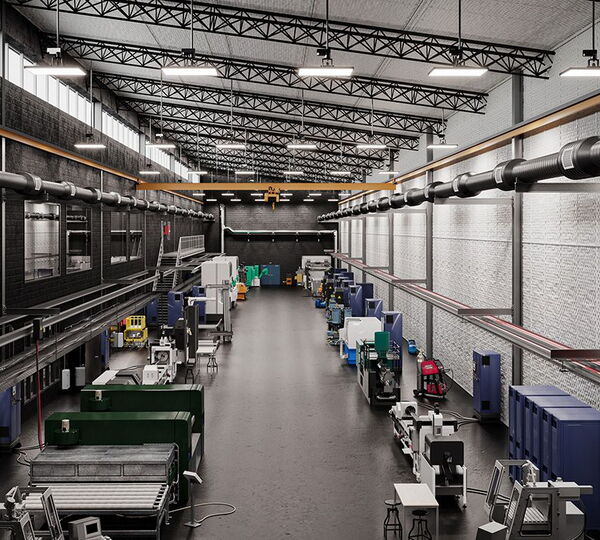Quilted Fiberglass Absorbers for Durable Noise Control
Quilted fiberglass absorbers are made by sandwiching layers of high-density fiberglass insulation between tough, weather-resistant facing materials—typically vinyl-coated fiberglass cloth or scrim-reinforced polyester facings. These materials are then stitched together in a quilted pattern that not only secures the fiberglass in place but also reinforces the panel against tearing, fraying, or sagging over time. This design ensures that the fill remains evenly distributed, even when the panels are installed vertically or exposed to challenging outdoor environments with wind, moisture, or vibration.
The quilting process not only improves structural rigidity but also enhances the absorber’s acoustic performance by eliminating gaps and maintaining consistent density across the surface area. These products are built for longevity and reliability in settings where ordinary acoustic panels would quickly deteriorate. Because of their durable construction, they can handle mechanical wear and tear, temperature fluctuations, and frequent cleaning without compromising their effectiveness.
Available in both modular panels and continuous roll formats, quilted fiberglass absorbers come in standard thicknesses of 1”, 2”, or 4”, each offering varying degrees of noise absorption. The choice of thickness depends on the specific frequency range that needs to be addressed—thicker absorbers are generally more effective at absorbing low-frequency sounds, which are typically harder to manage in industrial and exterior settings. These configurations are engineered to achieve high Noise Reduction Coefficient (NRC) values, often up to 1.00 NRC for thicker versions, meaning they can absorb virtually all incident sound energy in the treated frequency range.
Quilted fiberglass absorbers are also commonly used in conjunction with other noise control materials—such as mass loaded vinyl—to create high-performance composite panels that both block and absorb noise. This dual-function capability makes them highly adaptable for use in temporary or permanent noise control barriers, curtain systems, and enclosure linings. As such, they are a go-to solution in the acoustical treatment of power plants, HVAC systems, manufacturing equipment, construction zones, and anywhere else that needs rugged yet effective sound absorption.
Why Choose Quilted Fiberglass Absorbers?
- High Acoustic Performance: Excellent NRC ratings, with strong absorption across a wide frequency range
- Rugged Durability: Weather-resistant facing materials stand up to dirt, moisture, and abrasion
- Versatile Installation: Available in rolls or panels for a wide range of layout needs
- Custom Configurations: Tailored to your size, shape, and mounting requirements
- Outdoor and Indoor Ready Versions: Performs reliably in exposed environments where other materials fail
These absorbers are built to last, making them a smart investment for industrial or commercial clients who need serious sound control without compromising on durability.


Specifications
Size: Up to 4' Wide. Rolls Available up to 20'L
Facing: Standard or Exterior
Thickness: 1", 2", or 4"
NRC: Up to .98
Mounting: Grommets
Fire Rating: Class A per ASTM E84

Composition
Core Material: Fiberglass Batting
Facing: Vinyl Coated Fiberglass Cloth Facing

Common Applications
- Industrial facilities
- Construction sites
- Exterior applications
- Mechanical spaces
- OEM applications
Frequently Asked Questions
A: Use quilted fiberglass absorbers when your environment requires high durability, moisture resistance, or when the space is exposed to the elements. They’re ideal for outdoor use or areas with heavy machinery and vibration that may damage standard fabric-wrapped panels.
A: They can be hung using grommets, mounted on frames, attached to walls using mechanical fasteners, or suspended from ceilings and fences. Panels are lightweight and easy to handle, and rolls can be cut to fit custom spaces. For long-term installs, stainless steel grommets and UV-resistant mounting options are recommended.
A: Quilted fiberglass absorbers do not block sound like a barrier, but they can significantly reduce reflected sound and reverberation. NRC ratings typically range from 0.75 to 1.00 depending on the thickness. When used in combination with a noise barrier material, total noise reduction can be between 10-20db.
A: Yes. The optional exterior facing materials used in quilted fiberglass panels are often vinyl-coated or scrim-reinforced, making them water-resistant, UV-stable, and mildew-resistant. This makes them excellent for use in exterior noise control applications. Additionally, exterior products are quilted with gore tenera thread that is UV resistant.
A: Thicker panels (2" to 4") provide better absorption, particularly for lower frequencies. One-inch panels are effective for speech and mid-frequency noise. Our team can help evaluate your noise problem and recommend the optimal thickness and configuration.
A: Yes. We offer both pre-sized modular panels and continuous rolls that can be cut to fit on-site. We also offer edge binding kits for finishing cut panels. Custom shapes, dimensions, and attachment points are available. Rolls are ideal for lining large surfaces or curved areas quickly and efficiently. Standard width of the material is 48" but can be enlarged by request.
A: They are low-maintenance. The vinyl-facing surface can be wiped clean with a damp cloth. Avoid abrasive scrubbing or high-pressure washing. Regular visual inspections help ensure integrity in long-term installations.


